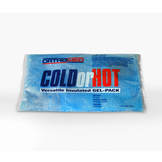As health professionals we often get asked what method is best to use when in pain or recovering from an injury. Both modalities are common treatment methods and with the differing opinions from Dr Google and amongst the public it’s easy to get confused.

How Does Ice Work?
- Have you been told in the past ice will help with your swelling after injury? Funnily enough recent studies have now shown that the effects of ice does not penetrate deep enough to tissue for any reduction in swelling to occur –> you can reduce swelling by using compression bandaging or taping + elevation of the injured limb
Ice therapy CAN however be used to assist in:
Reducing pain following an injury as it slows activity of nerves therefore slowing sensation of pain especially in soft tissue injuries, however it is limited in improving function and recovery.
How Does Heat Work?
Heat therapy can be applied via packs, patches and creams.
Heat:
- Increases blood flow which is thought to promote healing by increasing the supply of nutrients to the site of injury.

- Reduces pain perception by activating receptors within the brain to decrease pain signals
- Assist in improving range of movement in a joint by introducing changes to elastic properties in the bodies tissues.
- Aid in decreasing muscle spasm and tightness
What are the risks of ice and heat therapy?
- Application of heat or ice directly to the skin for an extended period without a towel or cloth between may cause potential for a burn. To avoid this do not apply either for longer than 20 minutes at a time and always avoid direct contact.
- Application of heat should be used with precaution in those with poor circulation, rheumatoid arthritis or diabetes.
- Heat should not be used on an area of acute increased inflammation, skin burn or cut.
 Still unsure?, ALWAYS talk to your GP or Physiotherapist about which one may be best for you!
Still unsure?, ALWAYS talk to your GP or Physiotherapist about which one may be best for you!